‘Regeneration should be for all’: will change in Johannesburg benefit its poorest residents?
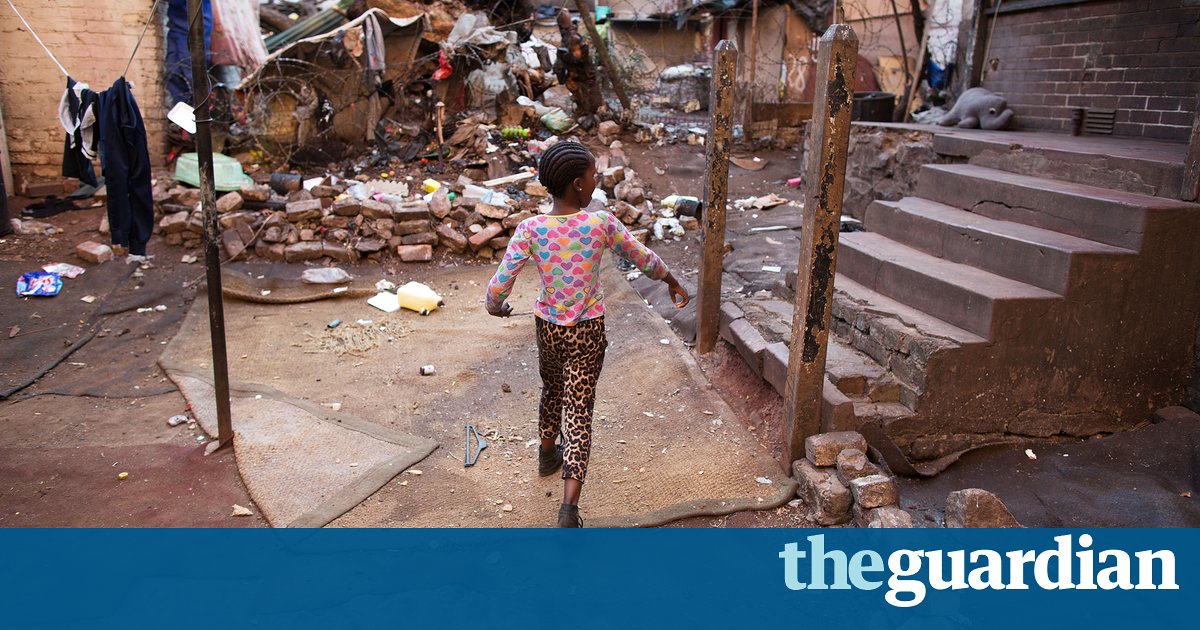
As South Africas largest city goes through rapid reinvention, streets once ruled by gangs are increasingly lined with cafes. But to those struggling for a living, the future still appears bleak. Does Johannesburgs new mayor have an answer?
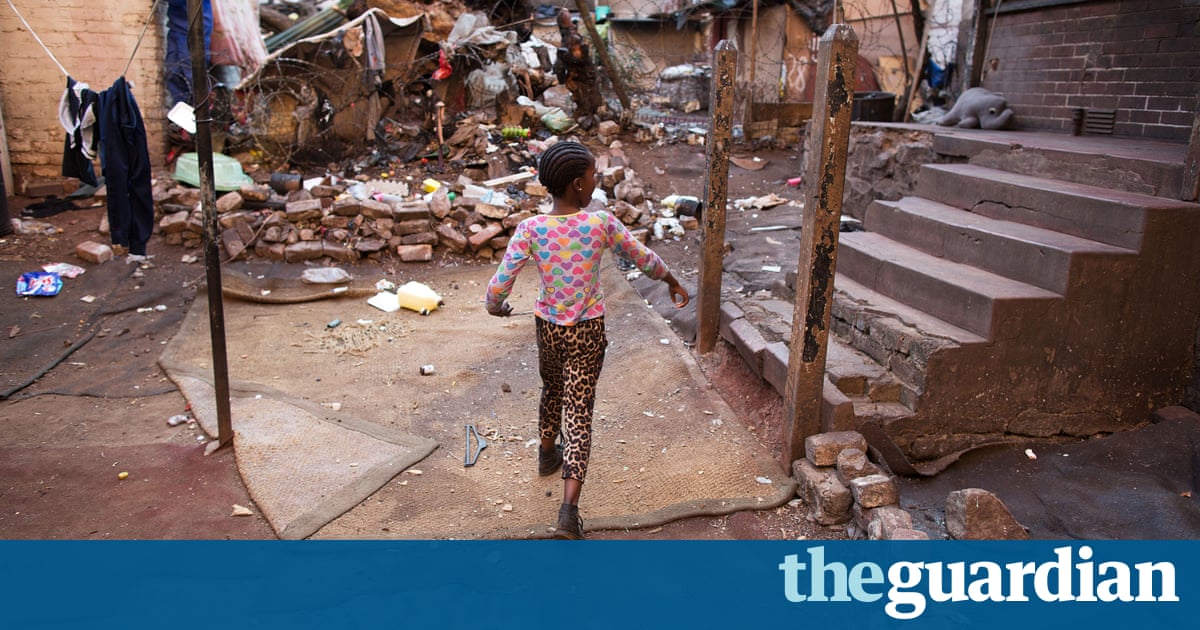
Very early in the morning, Diana Phololo and a dozen elderly women from 54 Soper Road step out on to the dark streets of central Johannesburg. If they are quick, they will beat the municipal cleaners to the detritus left overnight by revellers in the newly hip neighbourhoods of South Africas sprawling commercial capital.
There is little solidarity among the 100 residents of the burned-out building where Phololo, 58, has lived unlawfully for nearly 20 years. Each races to the shattered bottles left on the pavements outside the bars and restaurants. Sold by the kilo for recycling, the glass provides the residents with enough money to eat.
Its not easy at my age, but its all Ive got, Phololo says.
By dawn, the residents of 54 Soper Road are back home. They rest in overcrowded, windowless rooms or on the verandah, enjoying the few rays of sun that pierce the wall of tower blocks surrounding their small, derelict building. There is no gas, electricity or sanitation. Water comes from a single standpipe. Children play in the rubbish-strewn yard.
Nothing really has changed here for years, says Mandla Kayise, 50, who moved into the squat a decade ago when he arrived jobless in Johannesburg from his poor village in KwaZulu-Natal, 350 miles south.
But soon he, Phololo and the others will be gone. An eviction is scheduled later this year. Despite the length of time many have been living there, no law in South Africa guarantees occupiers security after a set period.

Once infamous for violence, crime and so-called hijacked buildings or squats, the centre of Johannesburg has undergone an astonishing transformation in recent years. Blocks that were once no-go zones now house art galleries, cafes and museums. New businesses are opening. Neighbourhoods such as Braamfontein and Maboneng are now seen as hubs of creativity and cool.
But the change, though real, is limited and exactly how widely its benefits will be shared is not yet clear.
Regeneration has to be for everyone I have no problem with land for luxury apartments, as long as there is commensurate land for the poor, says Stuart Wilson, of the local NGO Socio-Economic Rights Institute of South Africa.
Many have dated the decline of the 18 sq km inner city of Johannesburg to the countrys first democratic elections in 1994, which saw the African National Congress (ANC) take power.
But this is unfair, says Gerald Garner, a local historian and guide. Racist measures adopted by the apartheid regime from the 1950s gradually forced industries out of Johannesburgs centre in search of labour. Then international sanctions led to the exodus of global companies and their staff in the mid 1980s.
The cumulative effect was devastating, according to Garner. Apartment blocks and homes emptied, the doors of multi-storey offices were locked, luxury hotels closed. Basic utilities were disconnected.
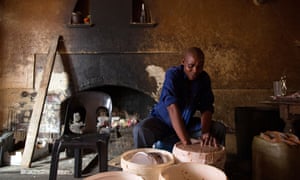
When racist laws restricting movement were reluctantly eased by the beleaguered apartheid regime, tens of thousands of poor migrants rushed to the city. Others came, and still come, from elsewhere in Africa. About 1,000 vacant buildings became vast squats, often run by violent gangs. The centre became an internationally infamous no-go zone.
Fitful regeneration efforts began around 15 years ago with major public projects funded by the ANC-run town hall, central government and overseas aid. Momentum gathered as South Africa prepared to host the 2010 World Cup, and private developers began buying up the hijacked buildings, evicting squatters and constructing apartments.
Sometimes this occurred peacefully, but in the past the process of emptying occupied buildings has, on occasion, involved significant violence. This was directed both at South African citizens, some of them long-term residents, and the large numbers of migrants who continued to flow in from poorer, less stable neighbouring countries and beyond.
Now only 100 or so illegally occupied buildings remain, though these still provide accommodation for about 60,000 people.
The residents of 54 Soper Road, in the tough neighbourhood of Berea, are among them. Berea has proved resistant to regeneration. There are many illegally occupied buildings and few of the signs of economic growth seen elsewhere. Pawnshops, nail parlours and liquor stores line dirty streets. Violent crime and prostitution is rife.
The washing gets stolen before it dries, says Majozi Thembezile, 57.
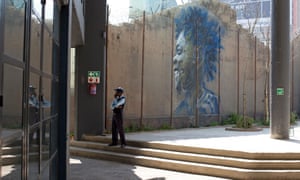
For the last three years the residents have faced eviction but, despite the appalling conditions, they do not want to leave. We have very little hope from our side, says Thembezile, who like many residents at 54 Soper Road came to Johannesburg from a rural village 20 years ago.
A last-ditch legal battle may delay the eviction, but is unlikely to halt it.
The fate of Thembeziles home raises important questions about the future regeneration of Johannesburg, and has implications across South Africa and beyond. One is how to find alternative accommodation for thousands of very poor people living in neighbourhoods that are now being gentrified.
Current provision is grossly inadequate. Since a landmark court ruling in 2011, the local council is obliged by law to house anyone evicted to make room for either private or public developments. Campaigners and experts, however, say authorities have provided only a handful of squalid and overcrowded blocks where families are forcibly split up. Even these can only meet a fraction of the demand.

As a result, the development of the city centre is forcing the very poor living there, who are almost all black, to the distant edges of Johannesburg where rents are cheaper. Many end up in the crowded townships the apartheid regime originally established to house black workers away from neighbourhoods designated for whites, which occupy the prime locations.
Some say the new exodus recalls that darker, earlier period: We are replicating the apartheid city. Obviously there is no racial segregation any more but we are entrenching historical inequality, says Wilson.
Eviction would mean ruin for the residents of 54 Soper Road. They say the city council has told them there is no money to rehouse them locally, when most make a living within walking distance of their home as security guards, day labourers or recyclers. Commuting from rented accommodation further out, even if they could find something affordable, would be prohibitively expensive.
Much depends on the citys new mayor, Herman Mashaba, a self-made tycoon from the centre-right Democratic Alliance who makes no secret of his belief in the power of the private sector.
Mashaba took office just weeks ago, ending decades of ANC civic rule. In an interview with the Guardian, he said living conditions at places such as 54 Soper Road amounted to human rights abuses and that the city had a responsibility to help the destitute.
It is unclear, however, whether local authorities can find the funds, administrative capacity and, most importantly, the political will to adequately rehouse those rendered homeless by development.
Mashaba certainly has an uncompromising message for those who are trying to halt the evictions, and a welcoming one for investors.
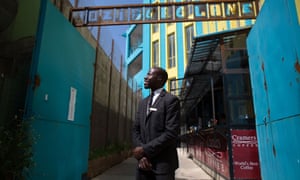
In the first place, someone has taken someones property, he said. If you want to make money, come to Joburg. We want to work with you. We are starting with local investors, but at the end of the day we need international investors.
One of the newest developments in the city centre is Joziburg Lane, a small alley beside a 60-year-old former department store that, having stood empty for many years, is now being rapidly converted into 320 loft-style apartments to be let to young professionals. Local authorities impose very few conditions, such as the provision of social housing, on new projects.
Its very much the free market, which I suppose is a good thing, says Geoff Jardine, the 34-year-old developer of the complex.
At 10am each weekday on Joziburg Lane, coffee beans are roasted, pomegranate juice poured, craft cheeses sliced and hipster fashions hung on rails by bearded men in checked shirts and Bermuda shorts. An events space will host concerts and exhibitions, a Bangkok-style market is being built and a bar is already open.
Whats exciting is that a very high proportion of property in town is owned by guys in their 30s, which is unique to Joburg. Theres opportunity here and real energy. Im looking forward to seeing what that does in 20 years time, Jardine says.
Garner, the guide, tells his tourist clients that the centre of Johannesburg has been almost entirely rebuilt six times in the citys 130-year history in an incredible cycle of boom and bust. This, at least, is a message which resonates with some in 54 Soper Road.
Here at home I cant sleep properly. I cant study. Theres too much noise. We are just struggling every day, says Mzwakhe Mkhize, a 22-year-old engineering student who lives with his mother in a tiny, windowless smoke-stained room. But I look at the Mercedes and the Porsches and the BMWs driving through the city, and think that, one day, I will drive one of those cars.
Are you experiencing or resisting gentrification in your city? Share your stories in the comments below, through our dedicated callout, or on Twitter using #GlobalGentrification
Producing in-depth, thoughtful, well-reported journalism is difficult and expensive but supporting us isnt. If you value the the Guardians coverage of the global housing crisis, please help to fund our journalism by becoming a supporter